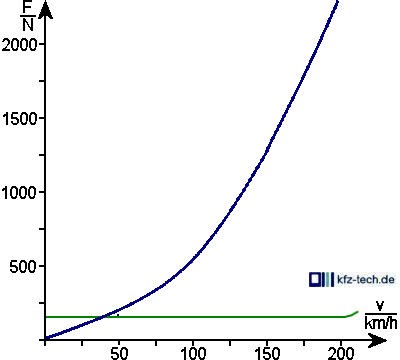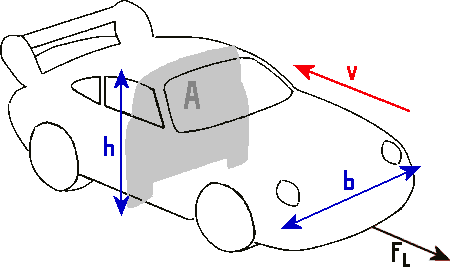|
|
Air resistance


| Vehicle | Cross-sectional area | cW value | Air resistance
at 100 km/h |
Motorcycle
cladded | 0,79 m² | 0,57 | 224 N |
Motorcycle
undisguised | 0,81 m² | 0,63 | 254 N |
| Small car | 1,80 m² | 0,32 | 287 N |
| Medium-sized vehicle | 2,00 m² | 0,28 | 279 N |
The greatest influence on air resistance is the speed of the vehicle or the air speed. The value for the shape (cW) and the largest cross-section follow at a considerable distance. Air resistance depends even less on air
density. If the cross-sectional area cannot be determined precisely, it can be determined using a rule of thumb based on height and width.
By the way, air resistance is not a constant value. It usually increases with driving speed. That is why it should always be specified too.
A  0,8 · b · h 0,8 · b · h
|
A ·  · v² · cW · v² · cW
FL
= 
2 |
FL · 2
A = 
 · v² · cW · v² · cW |
FL · 2
 = = 
cW · v² · A |
FL · 2
cW = 
 · v² · A · v² · A |

|
Here is another example:
Let's assume you have a car with a cross-sectional area of around 1.8 m2 and you are driving at 130 km/h with a cW value of 0.33. If your vehicle had a cW value of 0.30, then 136
km/h would be possible with the same air resistance.
|
|